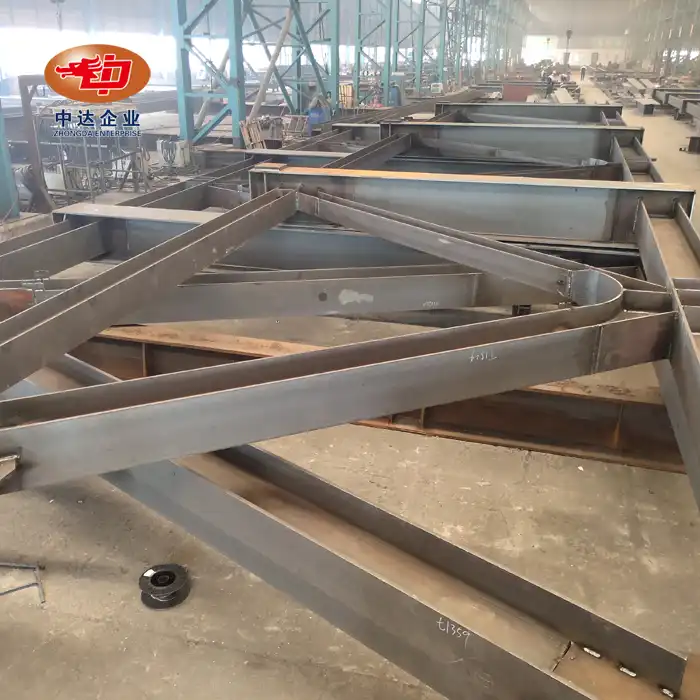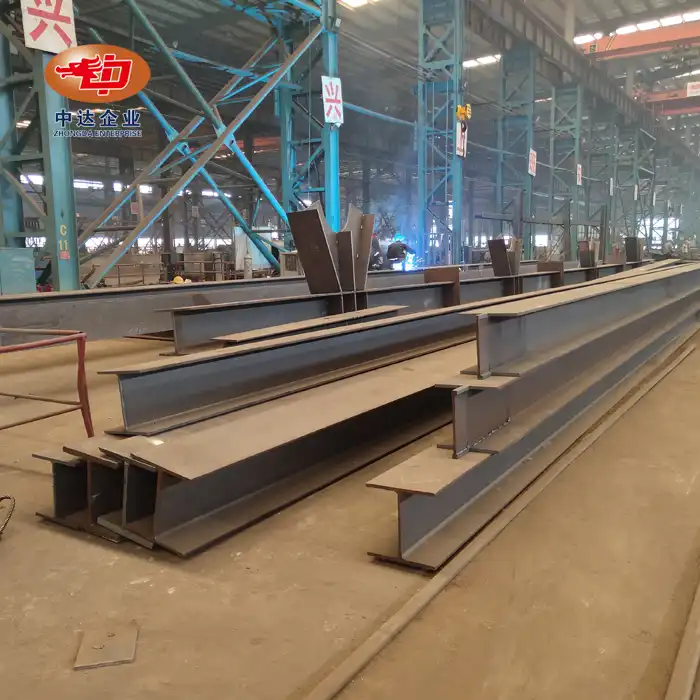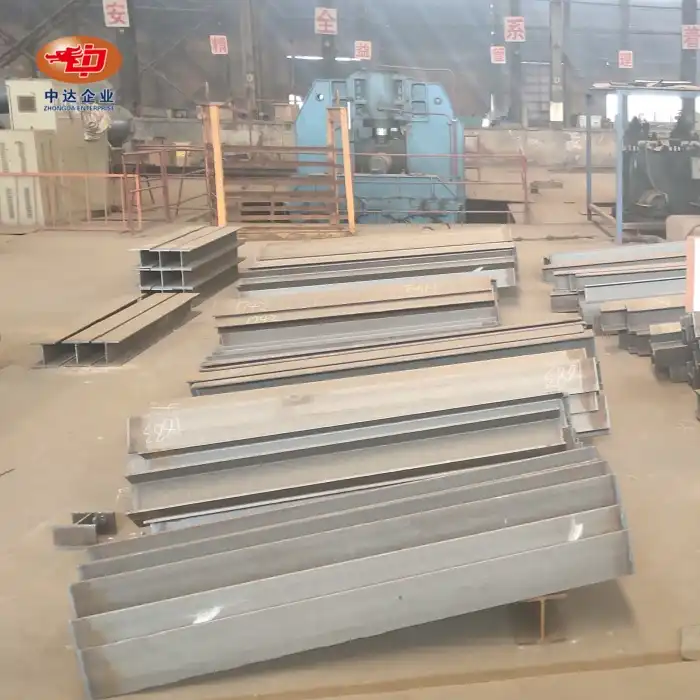
How to Meet Fireproofing and Seismic Requirements for Steel-Concrete Composite Beams?
Meeting fireproofing and seismic requirements for steel-concrete composite beams involves a multi-faceted approach. At Zhongda Steel, we employ advanced techniques such as covering steel beams with concrete slabs to achieve fire resistance ratings of up to 2 hours, meeting AS 4100 standards. For seismic performance, we utilize external prestressing technology to enhance ductility under normal service limit states. Additionally, proper material selection, detailed design calculations, and rigorous testing are crucial. By integrating BIM-driven prefabrication and our expertise in ultra-thick plate cutting, we ensure composite beams that excel in both fire resistance and seismic resilience, providing safe and durable structures for projects worldwide.
Enhancing Fire Resistance in Steel-Concrete Composite Beams
Understanding Fire Ratings and Standards
Fire resistance is a critical aspect of structural design, especially for steel-concrete composite beams. These beams combine the strength of steel with the fire-resistant properties of concrete, creating a synergistic system that can withstand high temperatures for extended periods. Understanding fire ratings and relevant standards is crucial for ensuring the safety and compliance of buildings.
Fire ratings typically indicate the duration a structural element can maintain its load-bearing capacity during a standardized fire test. For steel-concrete composite beams, achieving a 2-hour fire rating is often desirable and sometimes mandated by building codes. This rating ensures that in the event of a fire, the structure remains stable long enough for safe evacuation and firefighting operations.
Standards such as AS 4100 provide guidelines for fire-resistant design of steel structures, including composite beams. These standards outline testing procedures, performance criteria, and design methodologies to ensure consistent and reliable fire resistance across different projects and regions.
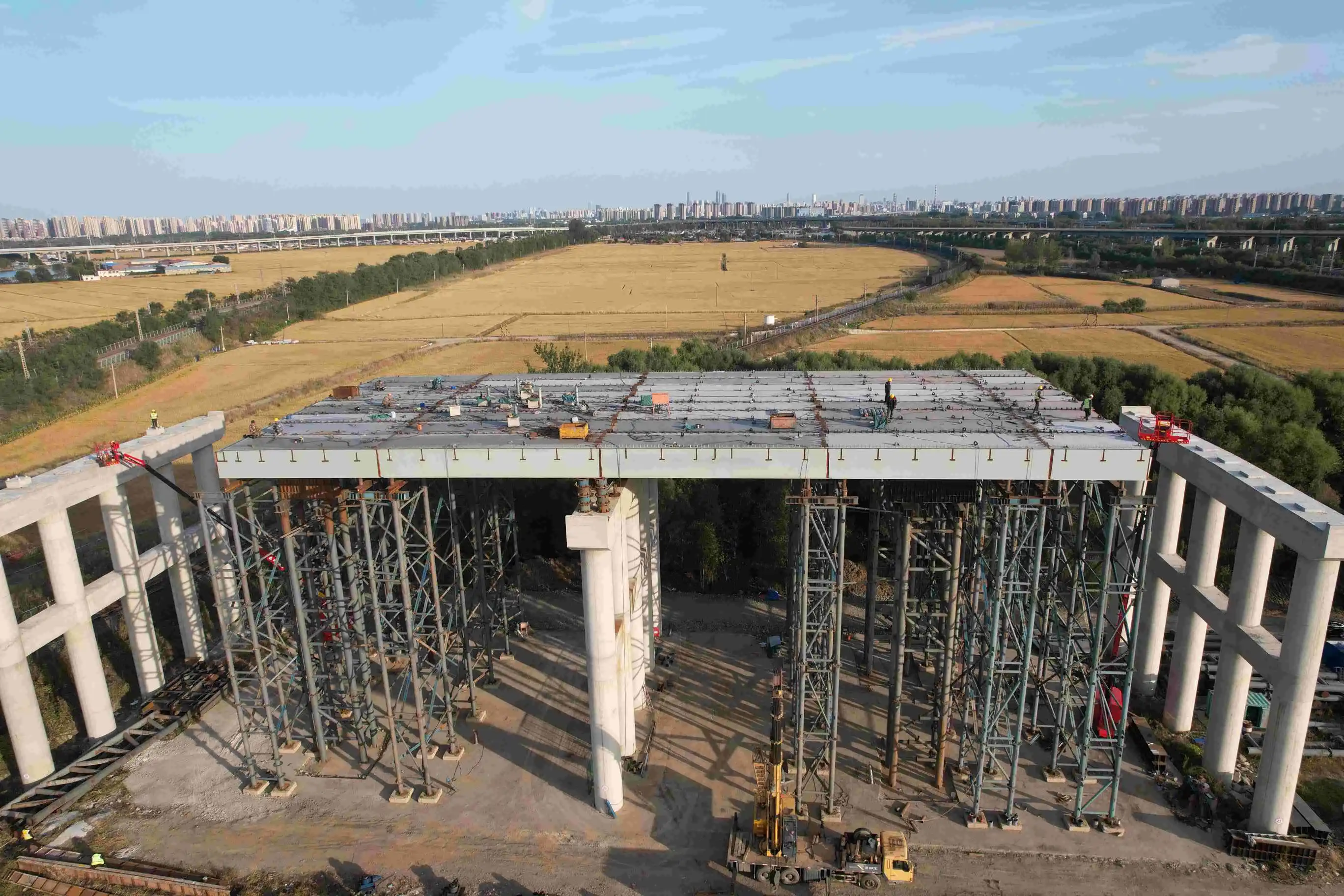
Concrete Encasement Techniques
One of the most effective methods for enhancing fire resistance in steel-concrete composite beams is concrete encasement. This technique involves covering the steel beam with a layer of concrete, effectively shielding it from direct exposure to fire. The concrete acts as a thermal barrier, slowing down the temperature increase in the steel and preserving its structural integrity for a longer duration.
At Zhongda Steel, we have perfected the art of concrete encasement for composite beams. Our process ensures uniform coverage and optimal thickness, maximizing fire resistance while minimizing additional weight. The concrete slab not only provides fire protection but also contributes to the overall strength and stiffness of the beam, enhancing its performance under normal loading conditions.
The thickness and composition of the concrete encasement can be tailored to meet specific fire rating requirements. By carefully selecting aggregate types, cement mixes, and reinforcement details, we can achieve fire resistance ratings exceeding 2 hours, surpassing the requirements of many building codes and ensuring maximum safety for occupants.
Innovative Fire-Resistant Materials
Beyond traditional concrete encasement, the field of fire-resistant materials for steel-concrete composite beams is rapidly evolving. Innovative solutions are emerging that offer enhanced protection with reduced weight and improved aesthetic options. These materials range from intumescent coatings that expand under heat to form an insulating char layer, to advanced fiber-reinforced concretes that exhibit superior fire resistance and post-fire strength retention.
At Zhongda Steel, we stay at the forefront of these developments, continuously evaluating and integrating new fire-resistant materials into our composite beam designs. Our research and development team works tirelessly to identify materials that not only meet stringent fire resistance standards but also offer additional benefits such as improved durability, reduced environmental impact, and ease of application.
By combining these innovative materials with our expertise in steel fabrication and BIM-driven design processes, we create composite beam solutions that offer unparalleled fire resistance without compromising on structural efficiency or constructability.
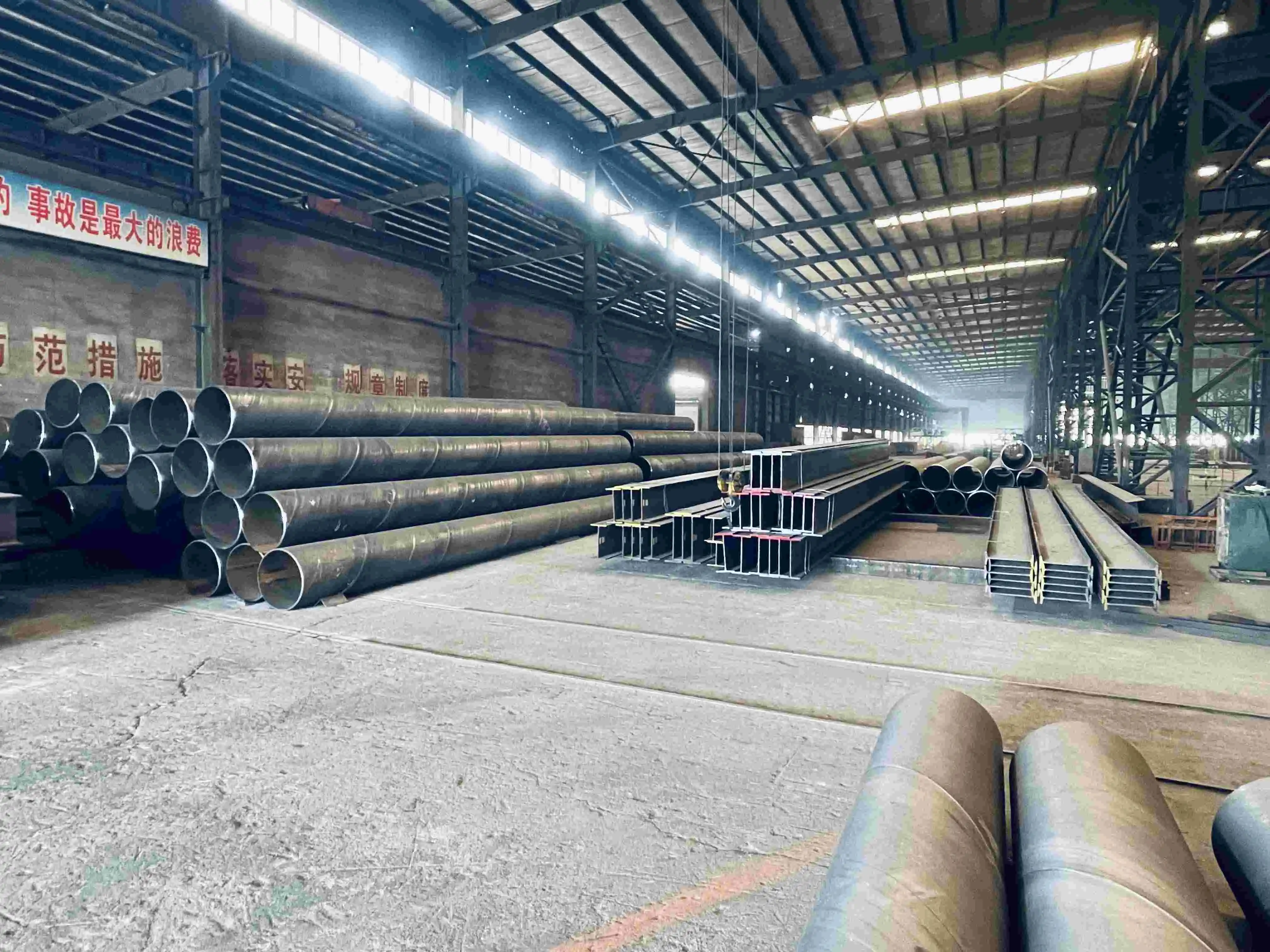
Seismic Performance Enhancement Strategies
External Prestressing Technology
Enhancing the seismic performance of steel-concrete composite beams is crucial for structures in earthquake-prone regions. One of the most effective strategies we employ at Zhongda Steel is external prestressing technology. This innovative approach involves applying tensile forces to the beam through external tendons, significantly improving its behavior under seismic loads.
External prestressing offers several advantages over traditional internal prestressing methods. It allows for easier inspection and maintenance of the prestressing system, provides flexibility in adjusting prestressing forces over time, and can be applied to existing structures as a retrofit solution. By carefully designing the prestressing profile and force distribution, we can optimize the beam's response to both gravity and lateral loads, ensuring ductile behavior even under extreme seismic events.
Our team of structural engineers utilizes advanced finite element analysis tools to simulate the behavior of externally prestressed composite beams under various loading scenarios. This allows us to fine-tune the prestressing design, ensuring that the beam maintains its ductility and load-bearing capacity even at the ultimate limit state.
Ductility Enhancement Techniques
Ductility is a critical property for seismic-resistant structures, allowing them to absorb and dissipate energy during earthquakes without catastrophic failure. For steel-concrete composite beams, enhancing ductility often involves careful detailing of the steel-concrete interface and strategic placement of reinforcement.
At Zhongda Steel, we employ various ductility enhancement techniques tailored to each project's specific requirements. These may include the use of shear studs with optimized spacing and strength to ensure composite action while allowing for controlled slip at high load levels. We also incorporate ductile reinforcement in critical regions, such as beam-column connections, to facilitate plastic hinge formation and energy dissipation.
Additionally, our engineers design composite beams with carefully calculated strength hierarchies, ensuring that ductile failure modes (such as flexural yielding) occur before brittle modes (like shear failure). This approach, combined with our precision fabrication capabilities, results in composite beams that exhibit excellent ductility and energy dissipation characteristics under seismic loading.
Performance-Based Seismic Design
Moving beyond traditional code-based approaches, Zhongda Steel embraces performance-based seismic design for steel-concrete composite beams. This methodology allows for a more nuanced and efficient design process, tailoring the beam's performance to specific project goals and site conditions.
Our performance-based design approach involves detailed non-linear analysis of the composite beam system under various earthquake scenarios. We consider factors such as ground motion characteristics, structural system properties, and desired performance objectives to develop optimized designs that meet or exceed seismic requirements while maximizing efficiency and constructability.
By leveraging our BIM capabilities and integrating seismic performance considerations from the earliest design stages, we ensure that our composite beams not only meet regulatory requirements but also provide superior resilience and safety in seismic events. This approach often results in more economical designs by avoiding overly conservative assumptions and allowing for innovative solutions that precisely address project-specific seismic challenges.
Integration of Fire and Seismic Design Considerations
Balancing Conflicting Requirements
Integrating fire resistance and seismic performance in steel-concrete composite beams presents unique challenges, as the requirements for each can sometimes conflict. For instance, increasing concrete cover for fire protection may reduce the effective depth of the beam, potentially impacting its seismic behavior. At Zhongda Steel, we tackle this challenge through a holistic design approach that carefully balances these competing demands.
Our engineers employ advanced optimization algorithms to find the sweet spot between fire resistance and seismic performance. This might involve strategically varying concrete thickness along the beam length, using high-performance fire-resistant materials in critical zones, or incorporating innovative connection details that maintain ductility without compromising fire protection.
By leveraging our expertise in both fire engineering and seismic design, we develop integrated solutions that meet or exceed requirements in both areas without unnecessary overdesign or compromises in either aspect.
Multi-Hazard Performance Analysis
Recognizing that structures may face multiple hazards during their lifespan, Zhongda Steel conducts comprehensive multi-hazard performance analyses for our steel-concrete composite beams. This approach considers the potential interactions between fire and seismic events, as well as other relevant hazards specific to the project location.
Our analysis encompasses scenarios such as post-earthquake fires, where the seismic event may have compromised fire protection systems or created new fire risks. We also consider how fire exposure might affect the subsequent seismic performance of the structure, accounting for potential material degradation or changes in structural behavior due to thermal effects.
Through these detailed multi-hazard assessments, we ensure that our composite beam designs provide robust performance across a wide range of potential scenarios, offering building owners and occupants comprehensive protection against diverse threats.
Innovative Composite Systems
At the forefront of structural engineering, Zhongda Steel is continuously developing innovative composite systems that synergistically address both fire and seismic requirements. These cutting-edge solutions often involve novel material combinations, advanced fabrication techniques, and creative structural configurations.
One such innovation is our high-performance composite beam system that incorporates phase-change materials within the concrete encasement. These materials absorb heat during fire exposure, providing enhanced thermal protection to the steel core while maintaining the beam's slender profile for optimal seismic response.
Another groundbreaking approach involves the use of self-centering composite beams with replaceable energy dissipation devices. This system offers excellent seismic performance by allowing controlled deformation and energy dissipation during earthquakes, while also facilitating rapid post-event restoration. The modular nature of these beams also enables easier integration of fire protection measures without compromising seismic functionality.
By pushing the boundaries of composite beam design and leveraging our state-of-the-art fabrication capabilities, Zhongda Steel continues to deliver innovative solutions that set new standards in both fire resistance and seismic performance.
Conclusion
Meeting fireproofing and seismic requirements for steel-concrete composite beams demands a multifaceted approach combining innovative design, advanced materials, and rigorous analysis. By integrating concrete encasement techniques, external prestressing, and performance-based design principles, we can create composite beam systems that excel in both fire resistance and seismic resilience. The key lies in balancing these often-competing demands through holistic engineering approaches and cutting-edge solutions. As the built environment faces increasingly complex challenges, continuous innovation in composite beam technology remains crucial for ensuring safer, more resilient structures worldwide.
Contact Us
For unparalleled expertise in steel-concrete composite beams that meet the most stringent fireproofing and seismic requirements, trust Zhongda Steel. Our BIM-driven prefabrication, ultra-precise fabrication capabilities, and commitment to innovation ensure that your project benefits from the latest advancements in structural engineering. Experience the perfect blend of safety, performance, and efficiency in your next building project. Contact us today at Ava@zd-steels.com to discuss how we can elevate your structural design to new heights of excellence.
References
Johnson, R.P. (2018). Composite Structures of Steel and Concrete: Beams, Slabs, Columns and Frames for Buildings. Wiley-Blackwell.
Kodur, V.K.R., & Naser, M.Z. (2020). Structural Fire Engineering. McGraw-Hill Education.
Bruneau, M., Uang, C.M., & Sabelli, R. (2011). Ductile Design of Steel Structures. McGraw-Hill Education.
Taranath, B.S. (2016). Structural Analysis and Design of Tall Buildings: Steel and Composite Construction. CRC Press.
Nethercot, D.A. (2016). Composite Construction. CRC Press.
Fardis, M.N. (2018). Seismic Design, Assessment and Retrofitting of Concrete Buildings: Based on EN-Eurocode 8. Springer.










